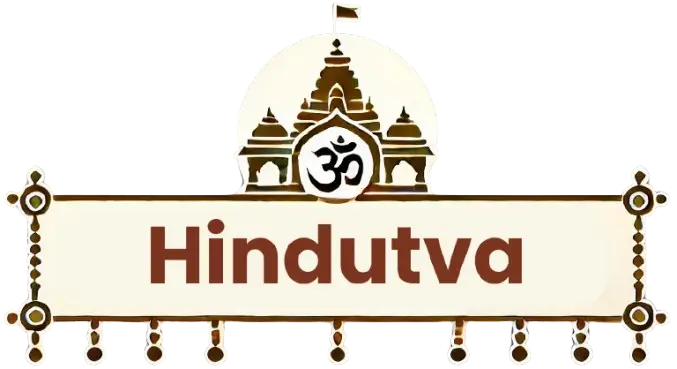Discover the profound significance of Kanyadaan, a sacred Hindu wedding ritual symbolizing love, trust, and spiritual growth. Explore its historical roots, cultural adaptations, and timeless relevance in modern ceremonies.
Kanyadaan, one of the most revered rituals in Hindu weddings, symbolizes the spiritual and emotional bond between a father and his daughter. The term “Kanyadaan” originates from two Sanskrit words: “Kanya” meaning daughter and “Daan” meaning gift. This sacred act represents the father entrusting his daughter to the groom, affirming his faith in the groom’s ability to cherish, protect, and respect her.

Kanyadaan is not merely a ceremony but a profound cultural expression that intertwines spirituality, tradition, and family values. Its roots can be traced back to ancient Hindu scriptures, making it a timeless practice that continues to resonate in modern times.
Historical Roots and Scriptural Significance
Kanyadaan has its origins deeply embedded in Vedic traditions, making it a cornerstone of Hindu wedding ceremonies for thousands of years. Ancient scriptures such as the Rigveda, Manusmriti, and Smritis highlight the importance of this ritual. The Rigveda mentions the father’s duty to ensure his daughter’s happiness and prosperity, portraying Kanyadaan as a sacred act that contributes to family dharma. The Manusmriti declares Kanyadaan as one of the highest forms of charity, equating it to a divine offering that brings immense spiritual merit. The Mahabharata describes elaborate Kanyadaan ceremonies during royal weddings, showcasing its significance in uniting two families.
In ancient Hindu society, Kanyadaan was more than a familial obligation; it was seen as a means of fulfilling dharma. The act was not merely symbolic but carried a spiritual weight, as it was believed to purify the soul of the giver and bring blessings to the bride and groom. The father, acting as a custodian of dharma, performs this ritual with humility and reverence, seeking divine blessings for his daughter’s prosperous married life.
Explore the diverse rituals in Hindu weddings to gain deeper insights into their origins and variations.
Symbolism and Spiritual Essence
The spiritual undertones of Kanyadaan extend beyond the ceremony itself. Here’s what it signifies:
- A Sacred Union: It symbolizes the merging of two families, fostering relationships built on mutual respect and shared values.
- Path to Moksha: In Hinduism, Kanyadaan is considered a purifying act that helps the parents attain spiritual liberation. By entrusting their daughter’s future to the groom, they fulfill a vital aspect of their dharma.
- Gift of Love: It reflects unconditional love and the parents’ faith in the couple’s journey together. The act is a testament to their selflessness and trust.
- Reverence for Daughters: Despite patriarchal structures, Kanyadaan elevates the daughter’s role, portraying her as a blessing to the family and a bridge between two households.
Learn more about the spiritual significance of Kanyadaan.
Step-by-Step Ritual of Kanyadaan
The Kanyadaan ceremony is an intricate process involving heartfelt rituals and mantras. It is meticulously structured and often conducted in the presence of a sacred fire (Agni) and witnessed by family and friends.
- Welcoming the Groom: The groom is welcomed as an embodiment of Lord Vishnu, signifying his divine role as the bride’s protector.
- Invocation of Deities: Priests chant Vedic mantras to invoke divine blessings for the couple.
- Joining Hands: The bride’s parents place her hand in the groom’s, symbolizing the transfer of guardianship.
- Sacred Tie: A thread or garland is tied around their joined hands to sanctify the union.
- Pouring Water: The pouring of holy water over the hands signifies purity and continuity.
- Vows and Blessings: The groom takes solemn vows to honor, respect, and cherish the bride throughout their life together.
Each of these steps is steeped in symbolism, highlighting themes of unity, purity, and commitment.
Discover more about such traditional practices at Hindutva Online.
Cultural Adaptations in Modern Times
While Kanyadaan retains its essence, it has evolved to suit contemporary values:
- Shared Participation: Mothers are now equally involved in the ritual, reflecting gender equality.
- Bride’s Agency: Modern ceremonies celebrate the bride’s individuality, viewing her as an equal partner.
- Simplified Practices: Urban lifestyles have led to shorter ceremonies, focusing on meaningful rituals over elaborate customs.
- Interfaith Weddings: Diverse families adapt Kanyadaan to include unique cultural elements, creating inclusive experiences.
Scientific and Psychological Insights
Rituals like Kanyadaan have psychological and emotional impacts:
- Closure for Parents: It helps parents embrace their daughter’s transition, fostering acceptance and emotional healing.
- Family Bonds: Strengthens relationships by uniting families in a shared purpose.
- Cultural Identity: Reinforces traditions, preserving cultural heritage for future generations.
Addressing Misconceptions
Some misconceptions surrounding Kanyadaan warrant clarification:
- Ownership Myth: Critics misinterpret it as transferring ownership of the bride. In truth, it signifies entrusting her happiness and well-being to her partner.
- Patriarchal Lens: While traditionally performed by fathers, modern ceremonies often include mothers, reflecting changing societal norms.
- Regional Variations: Diverse practices enrich Kanyadaan’s essence rather than diluting its significance.
Practical Tips for a Meaningful Kanyadaan
- Communicate the Ritual’s Importance: Educate the bride and groom about its significance.
- Personalize the Ceremony: Include elements that resonate with the family’s unique traditions.
- Foster Inclusivity: Adapt the ritual to respect interfaith or intercultural dynamics.
Kanyadaan encapsulates the essence of love, faith, and spiritual growth. By embracing both traditional values and modern perspectives, we ensure its timeless relevance for generations to come. This sacred ritual serves as a reminder of the enduring bonds between families and the cultural richness of Hindu traditions.
Author:
Neha Kulkarni – Journalist & Cultural Writer

